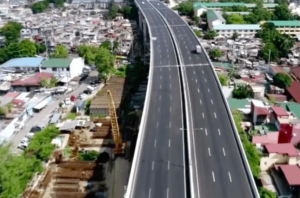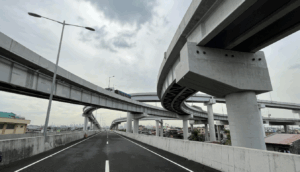
The Department of Public Works and Highways (DPWH) has unveiled an ambitious set of infrastructure projects aimed at alleviating traffic congestion in Metro Manila. In a recent town hall meeting led by President Ferdinand Marcos Jr., DPWH Secretary Manuel Bonoan presented a strategic plan encompassing the expansion and modernization of transportation infrastructure, including new roads, bridges, and expressways.
Central to the DPWH’s agenda is the traffic decongestion program, aligned with the Philippine Development Plan for 2023-2028 and the President’s socioeconomic objectives. This program includes constructing bypasses, diversion roads, expressways, flyovers, interchanges, and underpasses to improve the national road network.
Notable projects include the 18-kilometer Metro Manila Skyway Stage 3, which has dramatically cut travel time between Buendia and Balintawak, and the ongoing NLEX-SLEX Connector Road, expected to streamline the flow between South and North Luzon Expressways. The completion of these projects marks significant progress in the city’s traffic management efforts.
Further developments like the Southeast Metro Manila Expressway (C6 Expressway, Phase I), C5 South Link Expressway, and the Laguna Lakeshore Road Network Project-Phase I are in the pipeline, aiming to substantially reduce travel times and support the growing traffic demand in Metro Manila’s southern corridor.
The DPWH is also focusing on new bridges across the Pasig River and Manggahan Floodway to provide alternative routes and lessen congestion on major roads such as EDSA. Completed projects like the Binondo-Intramuros Bridge, BGC-Ortigas Center Link Road Project, and Estrella-Pantaleon Bridge, along with upcoming constructions like the North and South Harbor Bridge, highlight the government’s commitment to enhancing Metro Manila’s transport infrastructure.
Additionally, the proposed Bataan-Cavite Interlink Bridge, potentially the longest bridge in the country, exemplifies the DPWH’s large-scale ambitions to improve connectivity and reduce travel times across regions.
These infrastructure projects, coupled with initiatives to improve road safety, seismic resilience, and pedestrian facilities, demonstrate the DPWH’s comprehensive approach to tackling Metro Manila’s traffic woes. As these projects progress, they promise to transform the urban landscape, improving mobility, economic efficiency, and the overall quality of life for Metro Manila’s residents and commuters.





















Comments are closed for this article!